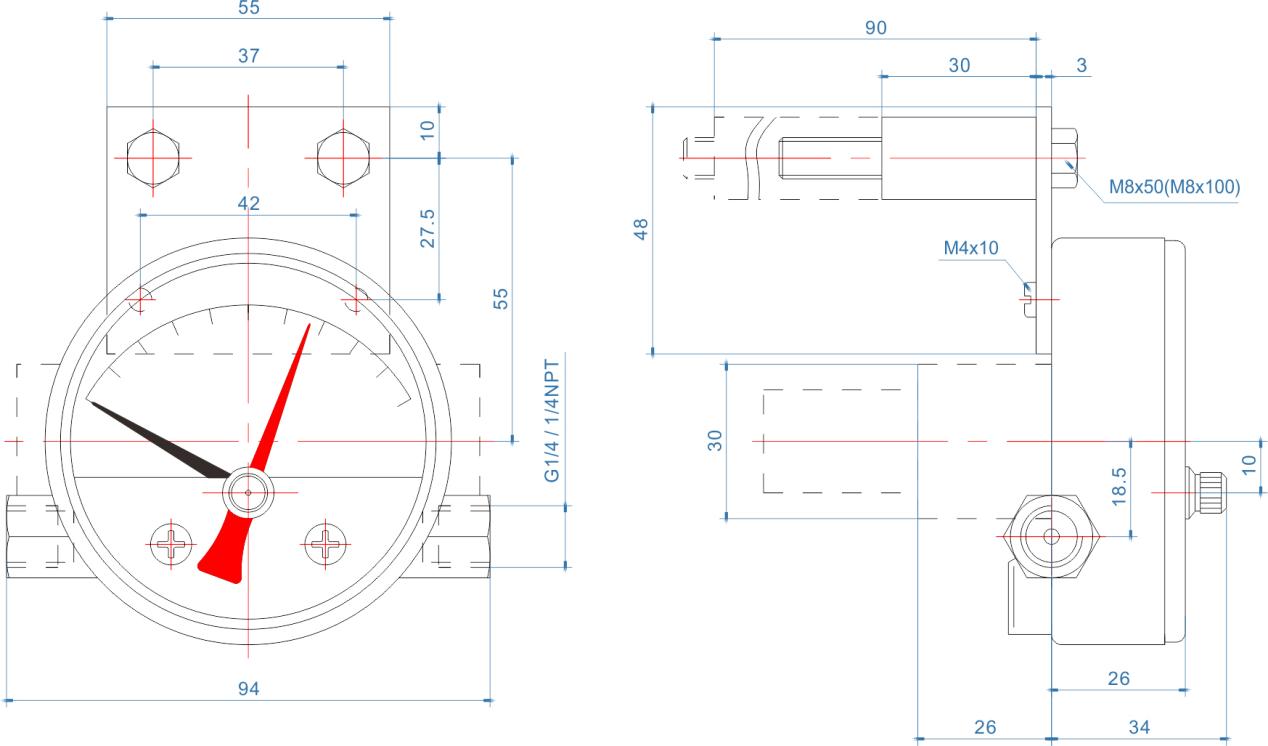
Nov . 16, 2024 01:42 Back to list
calibrating differential pressure gauge jah
Calibrating Differential Pressure Gauges A Comprehensive Guide
Differential pressure gauges are essential instruments used across various industries to measure the pressure difference between two points in a system. These gauges are crucial for monitoring process conditions, ensuring equipment performance, and maintaining safety standards. However, like all measurement devices, differential pressure gauges require periodic calibration to ensure accuracy and reliability. This article will explore the importance of calibrating differential pressure gauges, the process involved, and best practices to follow.
Importance of Calibration
Calibration is the process of comparing a measurement instrument against a known standard to determine its accuracy. In the case of differential pressure gauges, ensuring accurate readings is vital for several reasons. First and foremost, inaccuracies can lead to incorrect monitoring of process conditions, possibly resulting in inefficiencies or product quality issues. For instance, in a chemical manufacturing process, an inaccurate gauge could misinform operators about the flow rates, potentially causing overpressure in pipes or inadequate mixing of materials.
Moreover, regulatory compliance is another critical factor. Many industries operate under strict governmental or organizational regulations that require regular calibration of measurement instruments. Failing to calibrate differential pressure gauges can lead to noncompliance, resulting in penalties or even forced shutdowns.
Calibration Process
Calibrating a differential pressure gauge typically involves several steps. The first step is preparation. This includes gathering the necessary tools, such as a calibrated reference gauge or a pressure calibrator, and calculating the expected differential pressure range for the gauge being tested.
1. Remove the Gauge Begin by disconnecting the differential pressure gauge from its installation point. Ensure that the system is depressurized to avoid any accidents.
2. Set Up the Calibration Equipment Connect the differential pressure gauge to the reference gauge or calibrator. It's crucial to ensure that all connections are secure and there are no leaks, as this can affect the measurements obtained.
3. Apply Pressure Gradually apply known differential pressures to the gauge. This is typically done using a hand pump or an electronic pressure calibrator. The applied pressures should cover the entire range of the differential pressure gauge, noting the readings at various set points.
calibrating differential pressure gauge jah

4. Record and Compare Readings As different pressure levels are applied, record the readings on the differential pressure gauge. Compare these readings against the reference gauge’s readings. The difference between the two indicates the gauge's accuracy.
5. Adjust if Necessary If discrepancies are found, adjustment may be necessary. Many differential pressure gauges have an internal adjustment mechanism that allows for recalibration. If adjustments are not possible or the gauge deviates beyond acceptable limits, it may need to be replaced.
6. Document Results Once the calibration is complete, document the results. This documentation should include the date, the technician's name, the measured values, and any adjustments made. This record is crucial for quality assurance and regulatory compliance.
Best Practices for Calibration
To ensure effective calibration of differential pressure gauges, several best practices should be followed
- Frequency of Calibration Determine a calibration schedule based on the manufacturer's recommendations, regulatory requirements, and the gauge’s use conditions. Regular calibrations might be necessary for gauges used in critical applications.
- Environmental Considerations Perform calibrations in controlled environments to minimize the effects of temperature variations, vibrations, and humidity on the measurements.
- Training and Competence Ensure that personnel conducting calibrations are adequately trained and understand the importance of accurate measurements. Using inexperienced operators can lead to improper calibration.
- Use Certified Equipment Always utilize calibrated and certified reference gauges or pressure calibrators to guarantee the highest accuracy in measurements.
In conclusion, calibrating differential pressure gauges is a vital practice that ensures accuracy in measurements, maintenance of equipment, and compliance with regulations. By following the outlined steps and best practices, organizations can enhance their operational efficiency and safeguard against potential hazards. Regular calibration not only fosters a culture of safety but also optimizes process performance across various industries.
-
High-Precision 5 Valve Manifold Differential Pressure Gauge Suppliers
NewsApr.29,2025
-
High-Precision Diaphragm Vacuum Pressure Gauges Manufacturers & Quotes
NewsApr.29,2025
-
Omega Differential Pressure Gauges High Accuracy & Durability
NewsApr.28,2025
-
Low Pressure Differential Pressure Gauges Precision Solutions & Quotes
NewsApr.28,2025
-
Digital Diaphragm Pressure Gaauge Precision Measurement & OEM Quotes
NewsApr.28,2025
-
Differential Pressure Gauge China Price High-Accuracy & Best Quotes
NewsApr.28,2025
